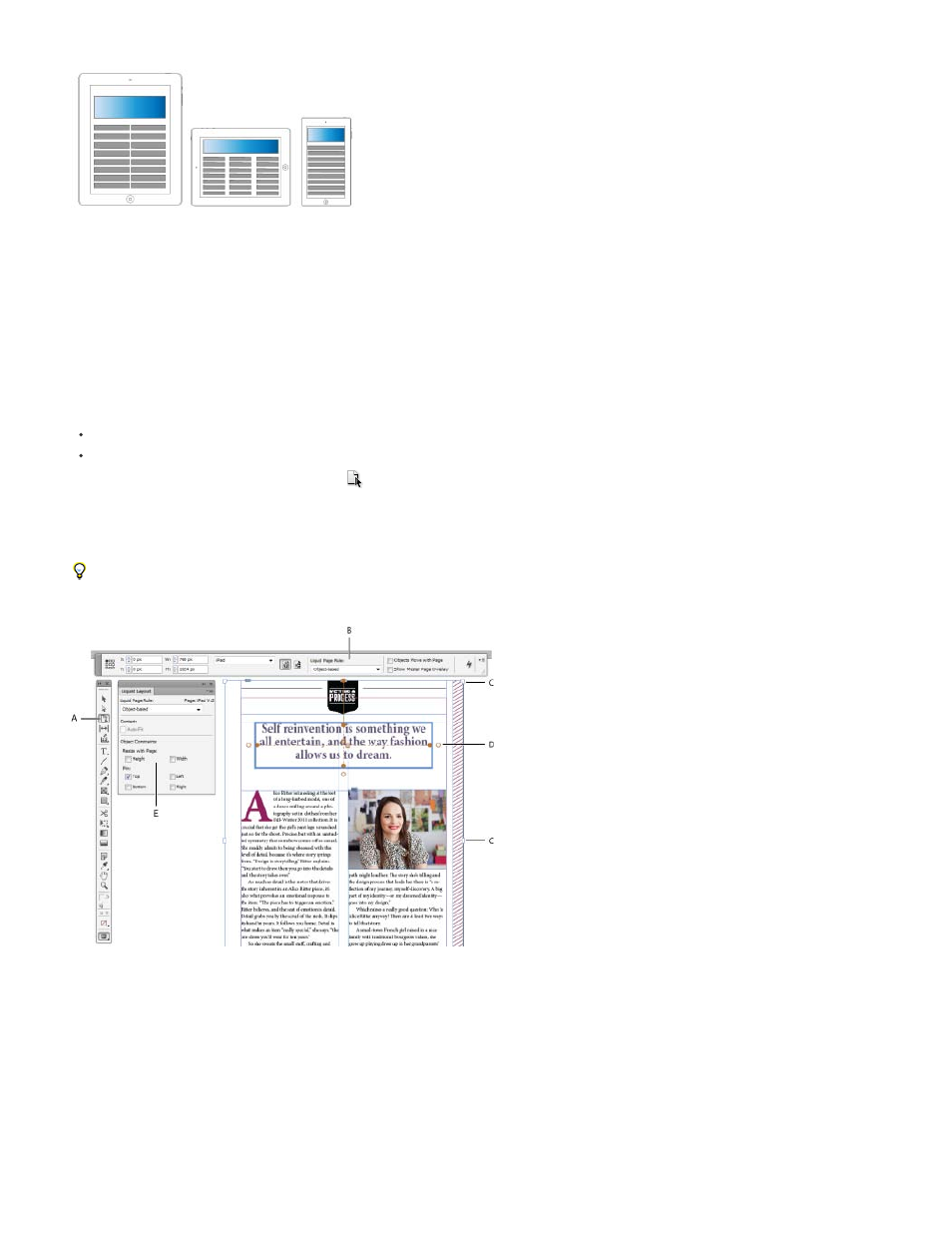Adobe InDesign User Manual
Page 210

Liquid layouts
Liquid layouts make it easier to design content for multiple page sizes, orientations, or devices. Apply liquid page rules to determine how objects
on a page are adapted when you create alternate layouts and change the size, orientation, or aspect ratio.
You can apply different rules to different pages, depending on the layout and the goals; only one liquid page rule can be applied to a page at a
time. Liquid Layout is a general term that covers a set of specific liquid page rules: scale, re-center, guide-based, and object-based page rules.
Use Liquid page rules to adapt content for output sizes.
To adapt layouts when creating new pages in the same document using alternate layouts.
To adapt layouts when changing existing page sizes. This is more efficient than the previous Layout Adjustment feature.
To apply a liquid page rule, select the Page tool
and click a page. Then choose a liquid page rule from the control bar. You can also use the
Layout > Liquid Layouts.
To preview the effects of the applied rule, use the Page tool to drag the page handles to resize the page. The page snaps back to original size
when you release it.
To resize the page, press Alt (Windows) or Option (Mac OS) and then drag. Using the mouse, however, to resize the page could result in
pages that are slightly off the intended size. Its more accurate to resize the page with the Height and Width widgets in the control bar.
Liquid page rules
A. Page tool B. Liquid page rules from control bar C. Page handles D. Pins for object-based rules E. Liquid Layout panel
Liquid page rules
You can apply different rules to different pages. Only one liquid page rule can be applied to a page at a time.
What this video to discover how to apply None, Scale, and Recenter rules when resizing a layout. Also learn the meaning behind "Based on
205
